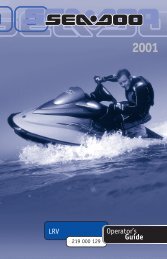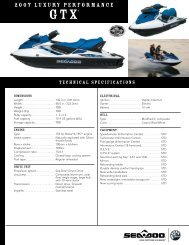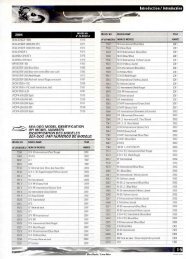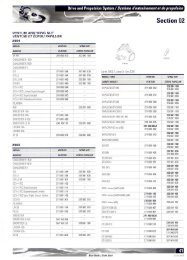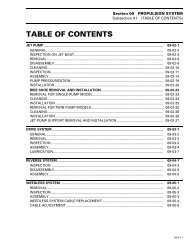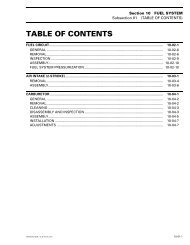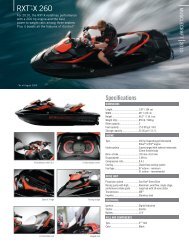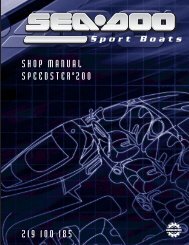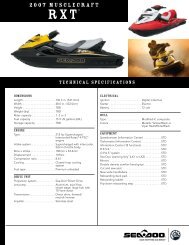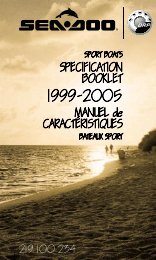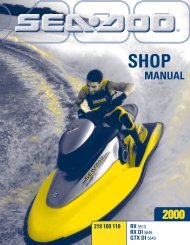warning - Sea-Doo.net
warning - Sea-Doo.net
warning - Sea-Doo.net
- No tags were found...
Create successful ePaper yourself
Turn your PDF publications into a flip-book with our unique Google optimized e-Paper software.
HelmetsSome Important ConsiderationsHelmets are designed to offer somedegree of protection in case of impactto the head. In most motorizedsports, the benefits of wearing a helmetclearly outweigh the drawbacks.However, in the case of motorized watersportssuch as riding personal watercraft,this is not necessarily true asthere are some particular risks associatedwith the water.BenefitsA helmet helps to reduce the risk ofinjury in case of a head impact againsta hard surface such as another craft,for example, in the case of a collision.Similarly, a helmet with a chinguardmight help prevent injuries to the face,jaw, or teeth.RisksOn the other hand, in some situationswhen falling off the watercraft, helmetshave a tendency to catch the water,like a “bucket”, and put severestresses on the neck or spine. Thiscould result in choking, severe or permanentneck or spine injury, or death.Helmets may also interfere with peripheralvision and hearing, or increasefatigue, which could contribute to increasethe risk of a collision.Weighing the Risks vs BenefitsIn order to decide whether or not youshould wear a helmet, it is best to considerthe particular environment youwill be riding in, as well as other factorssuch as personal experience. Willthere be a lot of traffic on the water?What is your riding style?The Bottom LineSince each option minimizes somerisks, but increases others, beforeeach ride you must decide whether towear a helmet or not based on yourparticular situation.If you decide to wear a helmet, youmust then decide what type is themost appropriate for the circumstances.Look for helmets that meetDOT or Snell standards, and if possible,choose one designed for motorizedwatersports.RacingDue to the nature of competition andthe proximity of other crafts, BRP recommendswearing a helmet in closequarter PWC racing activities. Alwaysfollow the helmet requirements of thesanctioning organization.To BringAlways carry the regulatory safetyitems and have them convenientlyon board available for use. Checkthe local regulations or consult yourauthorized <strong>Sea</strong>-<strong>Doo</strong> dealer. Such requiredsafety items usually include,without limitation, a sound signalingdevice such as a whistle, a watertightflashlight or approved flares, a buoyantheaving line, an anchor and rope*,a bailer*, and an appropriate fire extinguisher*.The items marked witha “*” are not required in Canada if allpersons on board a PWC are wearingaPFD.A cellular telephone in a waterproofbag or container has also been foundto be beneficial to boaters when in distressor just for contacting someoneon shore.12 ___________ SAFETY INFORMATION ___________



